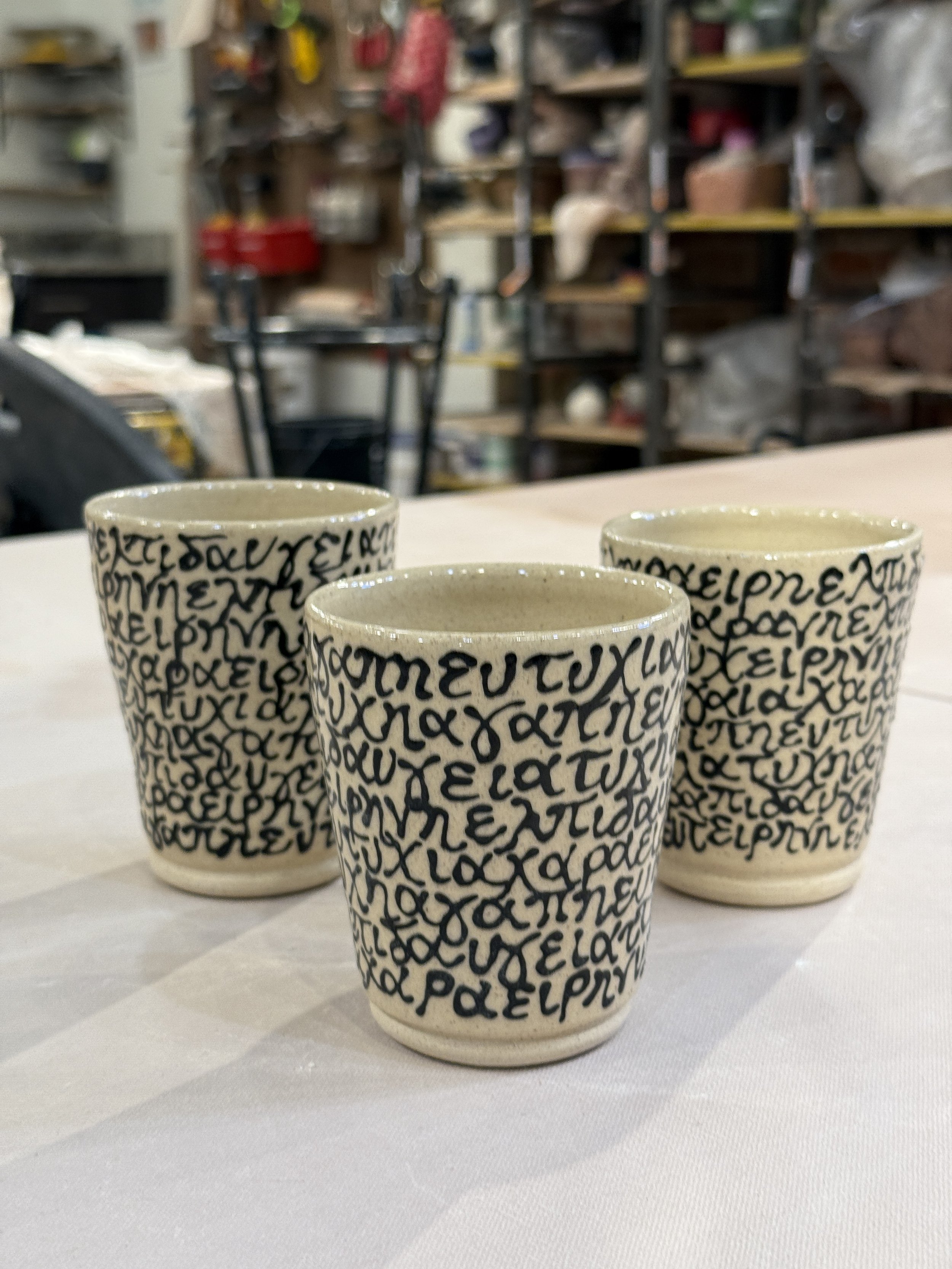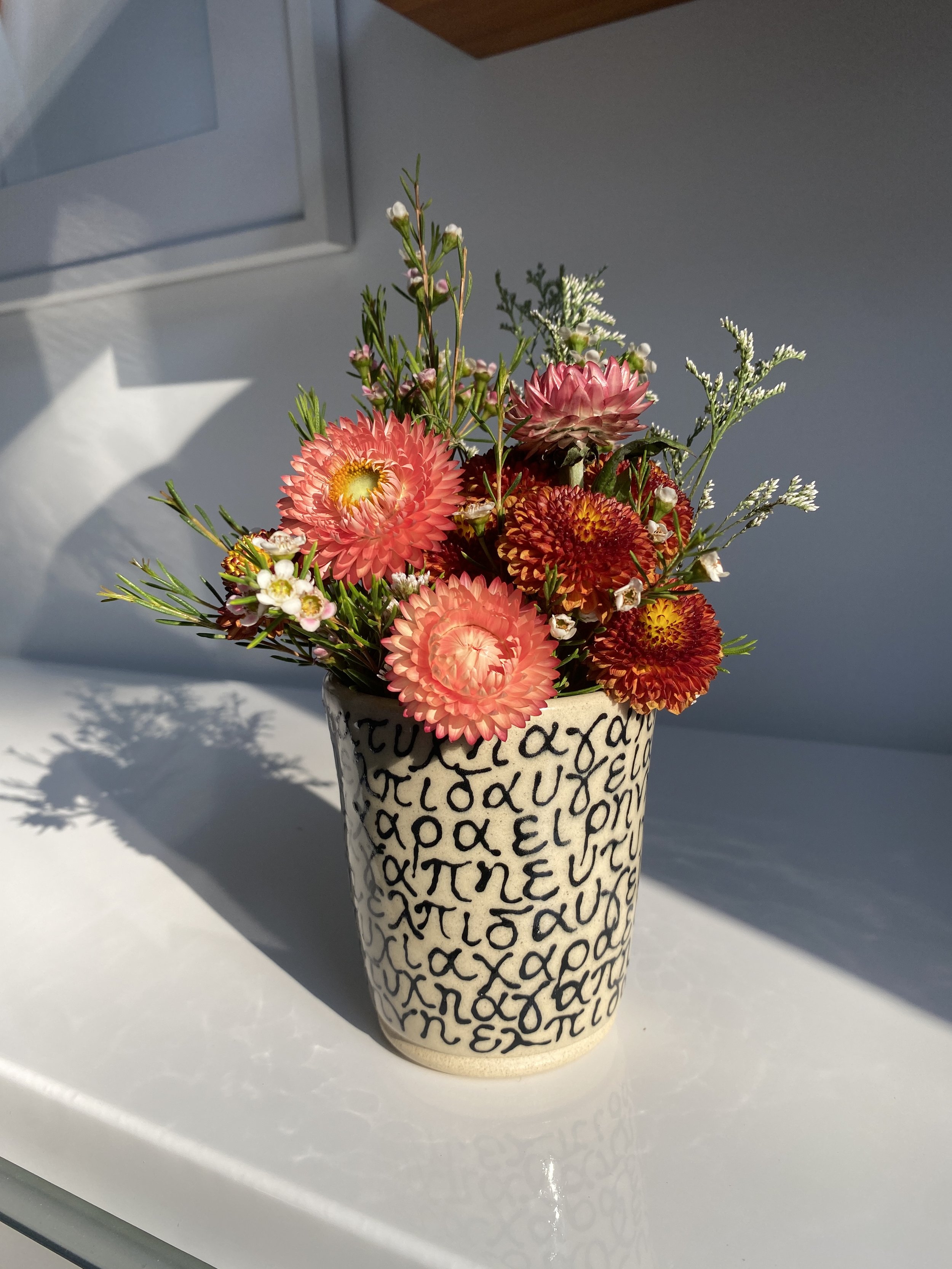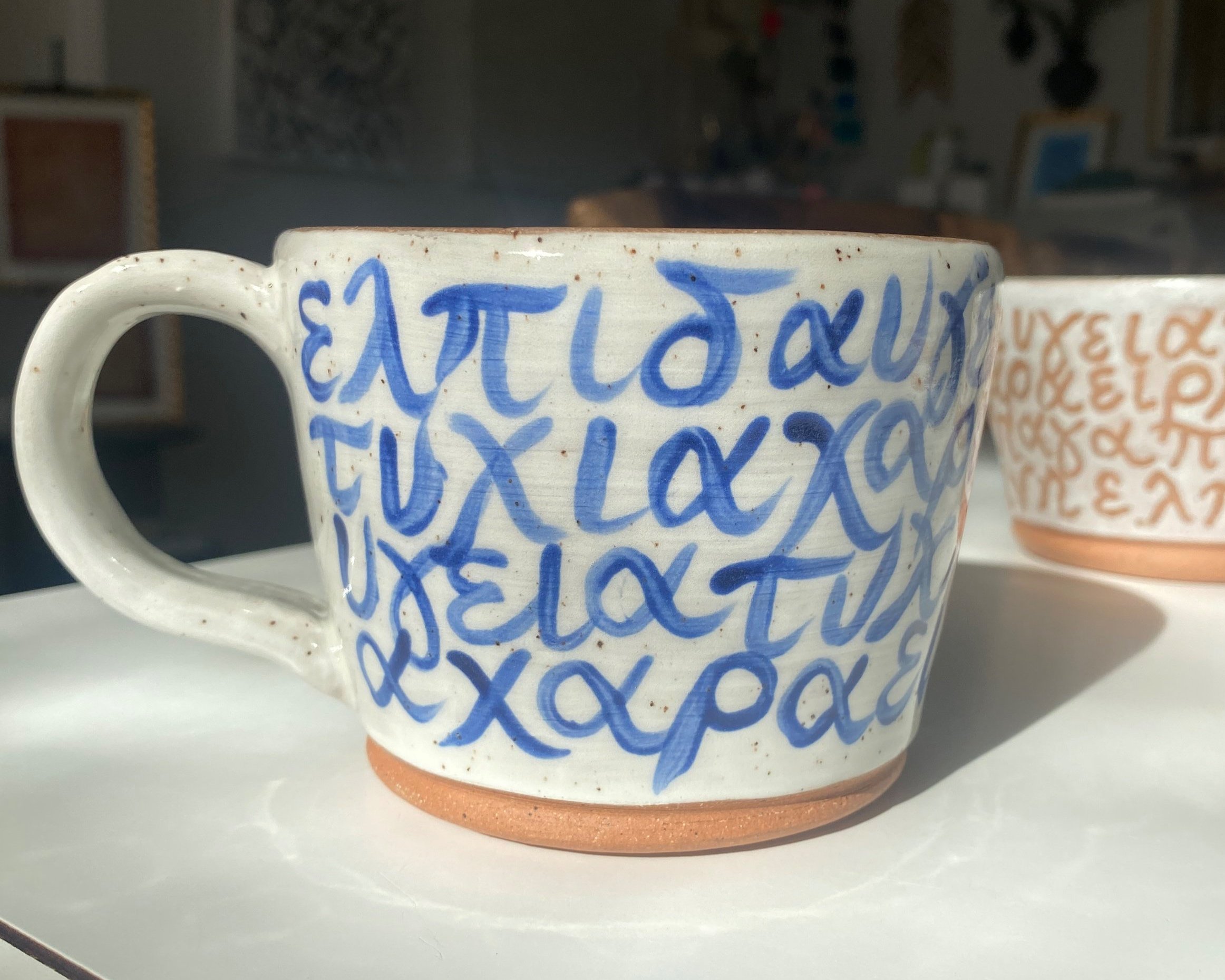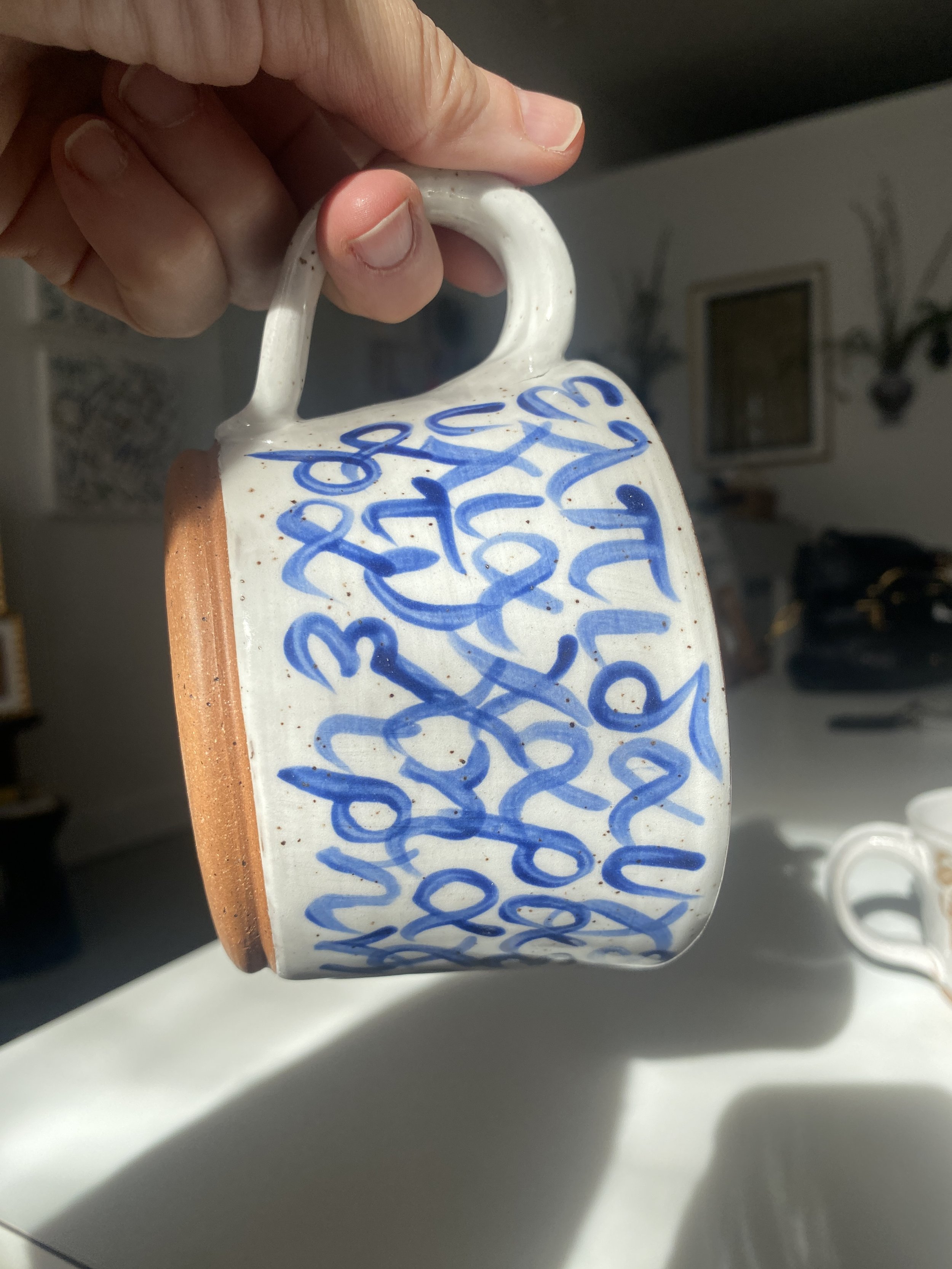 Image 1 of 6
Image 1 of 6

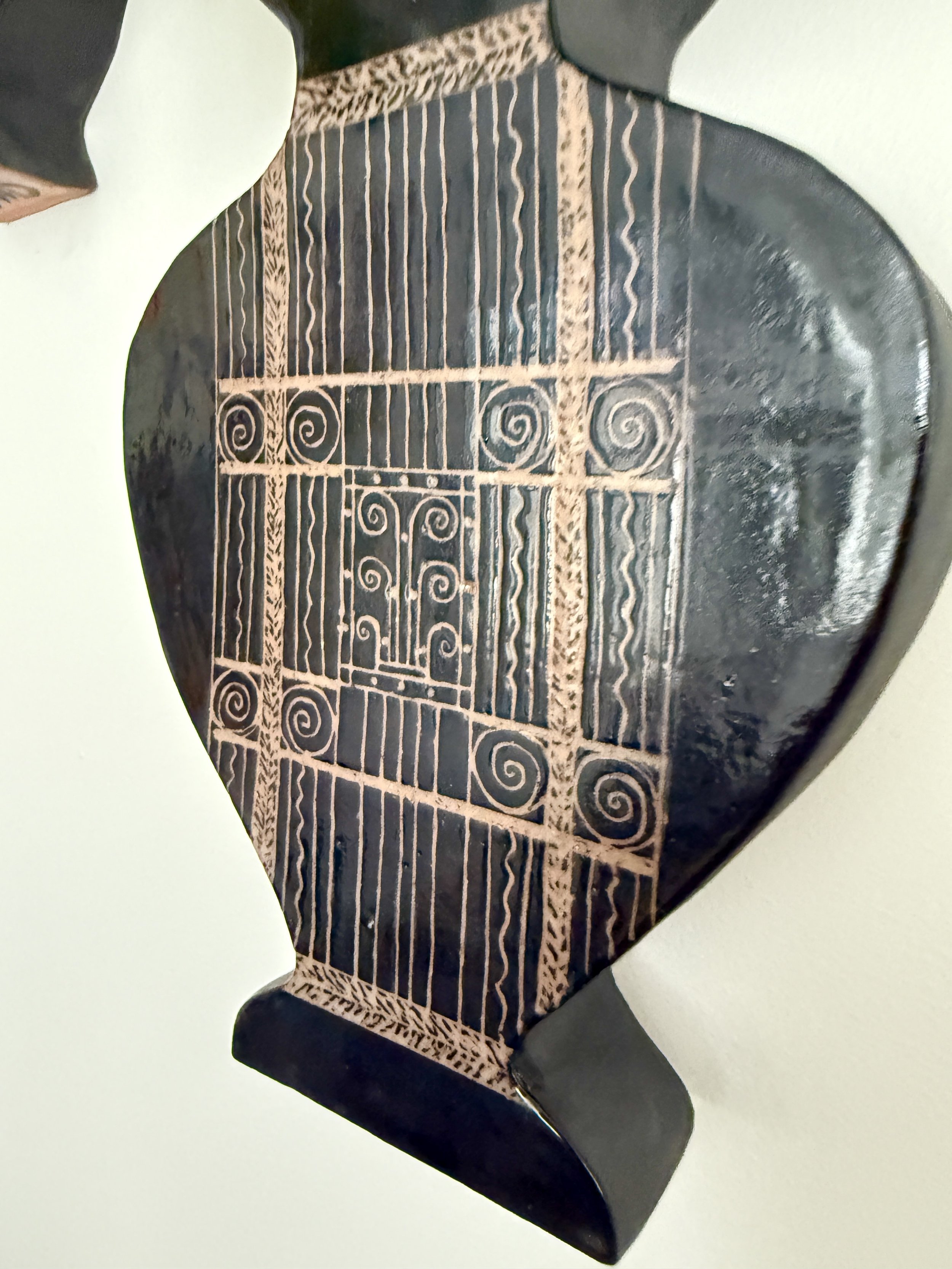 Image 2 of 6
Image 2 of 6

 Image 3 of 6
Image 3 of 6

 Image 4 of 6
Image 4 of 6

 Image 5 of 6
Image 5 of 6

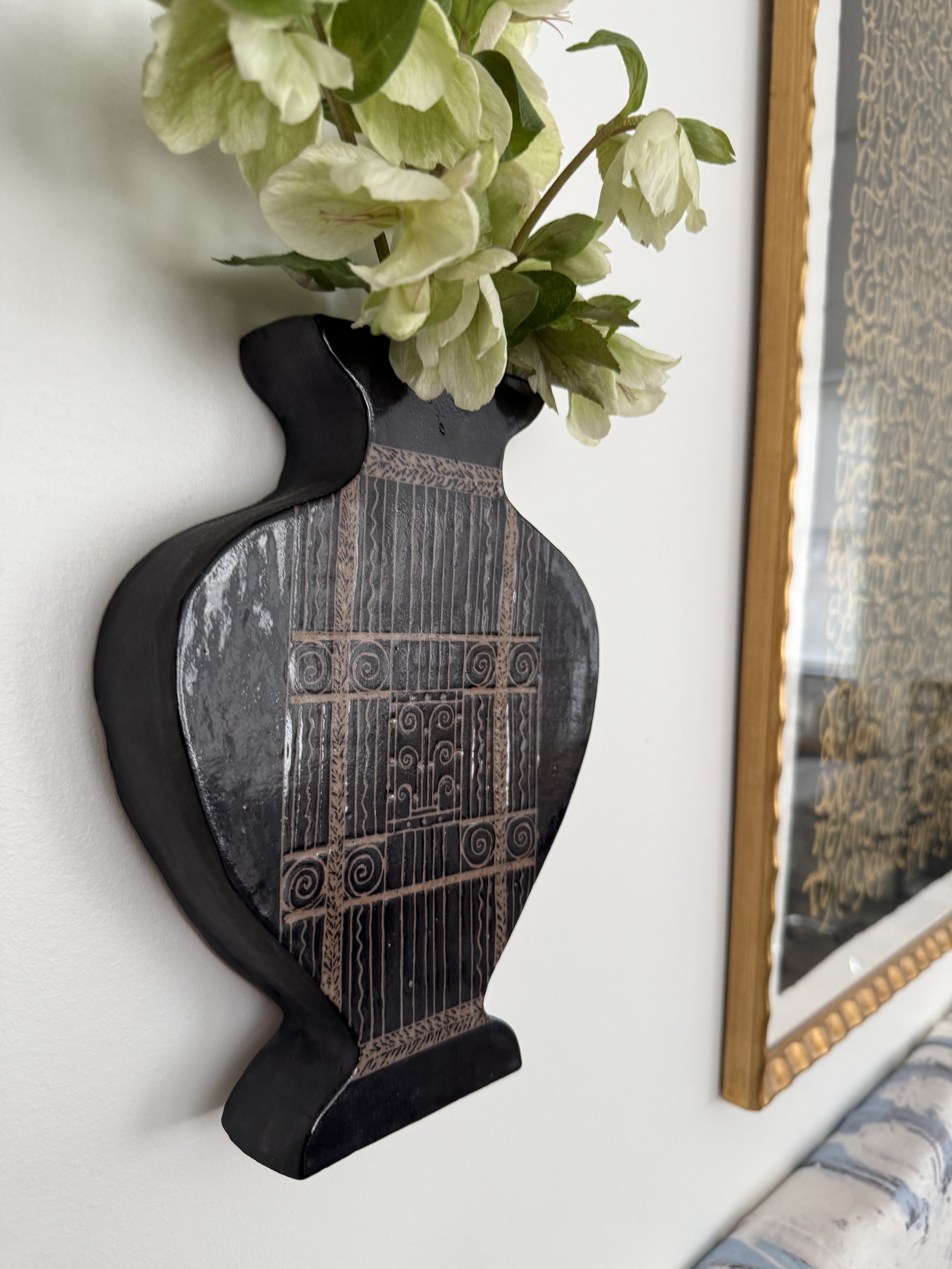 Image 6 of 6
Image 6 of 6







Athenian Door Wall Vessel Macro
Inspired by the impressive ironwork doors in the Athenian suburbs and island homes, Theodora created a handbuilt ceramic wall vessel. Each handmade piece contains unique character, shape and imperfections — all imprints of the artistic process and the hand of the maker.
This unique vessel shape is reminiscent of Ancient Greek amphoras. It was hand built by Theodora using the slab technique with red stoneware clay. Once the vessel has taken shape and dried to a perfect leather hard condition, the vessel was painted with black underglaze, followed by sgraffito carving from an Athenian ironwork door seen on her travels to the Motherland.
Fully glazed and able to hold water and flowers.
Measures 10” H x 7.5” at widest point with a 3” opening for stems.
The sgrafitto technique is an unhurried and careful scratching of the top layer of painted clay to reveal texture below. Sgraffito comes from the Italian word meaning “scratching”, and it is believed that this method originated in the 10th century from ancient Egypt and Roman periods with a substantial appearance of original designs during the 13th century in the Iberian Peninsula under Islamic influences.
Once the full composition is completed with sgraffito, the vessel enters the kiln for the first bisque firing. Afterwards, the vessel is hand washed, the foot waxed and three layers of clear glaze to te front of the vessel. The inside of the vessel is also glazed, then back into the kiln for its final firing to a classic terracotta red and black combination.
Food safe and lead free. Hand wash recommended.
All sales final.
Inspired by the impressive ironwork doors in the Athenian suburbs and island homes, Theodora created a handbuilt ceramic wall vessel. Each handmade piece contains unique character, shape and imperfections — all imprints of the artistic process and the hand of the maker.
This unique vessel shape is reminiscent of Ancient Greek amphoras. It was hand built by Theodora using the slab technique with red stoneware clay. Once the vessel has taken shape and dried to a perfect leather hard condition, the vessel was painted with black underglaze, followed by sgraffito carving from an Athenian ironwork door seen on her travels to the Motherland.
Fully glazed and able to hold water and flowers.
Measures 10” H x 7.5” at widest point with a 3” opening for stems.
The sgrafitto technique is an unhurried and careful scratching of the top layer of painted clay to reveal texture below. Sgraffito comes from the Italian word meaning “scratching”, and it is believed that this method originated in the 10th century from ancient Egypt and Roman periods with a substantial appearance of original designs during the 13th century in the Iberian Peninsula under Islamic influences.
Once the full composition is completed with sgraffito, the vessel enters the kiln for the first bisque firing. Afterwards, the vessel is hand washed, the foot waxed and three layers of clear glaze to te front of the vessel. The inside of the vessel is also glazed, then back into the kiln for its final firing to a classic terracotta red and black combination.
Food safe and lead free. Hand wash recommended.
All sales final.





